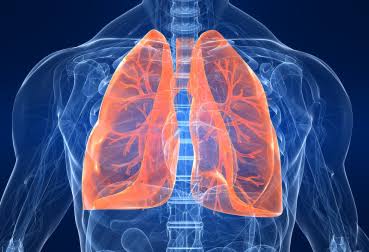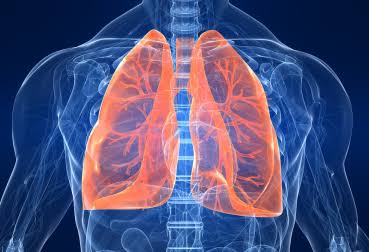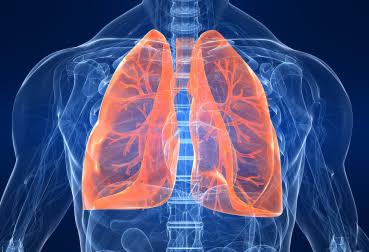Health desk
Sandeep Dhand Ludhiana
Journalist and Research Analysist
Asthma is a chronic respiratory condition that affects millions of people worldwide. It is characterized by inflammation and narrowing of the airways, which leads to difficulty in breathing. The condition can vary in severity from person to person, with some individuals experiencing mild symptoms while others endure frequent and life-threatening asthma attacks. Although asthma can be managed effectively, it requires continuous monitoring and treatment.
Causes of Asthma
The exact cause of asthma is not entirely understood, but it is believed to result from a combination of genetic and environmental factors. Several triggers can lead to the onset or worsening of asthma symptoms. Some of the main causes and contributing factors include:
- Genetic Predisposition: Asthma often runs in families. If one or both parents have asthma or allergies, their children are more likely to develop the condition. A family history of asthma is a strong predictor of the disease.
- Environmental Triggers: Exposure to allergens such as pollen, dust mites, mold, and pet dander can provoke asthma symptoms. These allergens trigger an immune response that inflames the airways, making breathing difficult. Airborne pollutants, like smoke from cigarettes or industrial emissions, can also exacerbate asthma symptoms.
- Respiratory Infections: Infections, especially viral infections like the common cold or flu, can aggravate asthma or even trigger it in people who are predisposed. Children are particularly vulnerable, as their immune systems are still developing, and their airways are smaller.
- Occupational Factors: Exposure to chemicals, dust, or fumes in the workplace can lead to the development of asthma in adults. This is known as occupational asthma, and it often affects individuals in industries such as agriculture, manufacturing, and construction.
- Exercise-Induced Asthma: For some individuals, physical exertion, especially in cold or dry air, can trigger asthma symptoms. This is commonly referred to as exercise-induced bronchoconstriction (EIB), where the airways narrow during or after exercise.
- Emotional Stress: While stress and strong emotions do not directly cause asthma, they can lead to hyperventilation or rapid breathing, which may worsen asthma symptoms. In some cases, stress can also weaken the immune system, making individuals more susceptible to asthma triggers.

Symptoms of Asthma
Asthma symptoms can vary from person to person and may range from mild to severe. Common symptoms include:
- Shortness of Breath: One of the most characteristic symptoms of asthma is shortness of breath. Individuals may feel as though they cannot catch their breath, especially during physical activities or at night.
- Wheezing: Wheezing is a high-pitched whistling sound that occurs when air moves through narrowed airways. This sound is often heard during exhalation, but it can also occur while inhaling in severe cases.
- Coughing: A persistent cough, particularly at night or early in the morning, is another common asthma symptom. The cough may be dry or accompanied by mucus production.
- Chest Tightness: People with asthma often describe a sensation of tightness or pressure in the chest, making it feel as though a heavy weight is pressing down on them.
- Frequent Respiratory Infections: Asthma sufferers may experience more frequent and prolonged respiratory infections, such as bronchitis or pneumonia, which can worsen asthma symptoms.

Diagnosis of Asthma
Diagnosing asthma involves a combination of medical history, physical examination, and diagnostic tests. Physicians typically inquire about a patient’s symptoms, triggers, and family history of asthma or allergies. A lung function test, such as spirometry, may be conducted to assess how well the lungs are functioning. Spirometry measures the amount of air a person can inhale and exhale, as well as how quickly they can exhale. Other tests, like peak flow measurement and bronchoprovocation testing, may also be used to evaluate airway responsiveness.
Treatment of Asthma
While asthma cannot be cured, it can be effectively managed with the right treatment plan. The goal of asthma treatment is to control symptoms, prevent asthma attacks, and maintain optimal lung function. Treatment usually involves a combination of medication, lifestyle changes, and avoiding triggers.
- Medications:
Bronchodilators: These medications help relax the muscles around the airways, making it easier to breathe. Short-acting bronchodilators (such as albuterol) are often used during asthma attacks or when symptoms worsen. Long-acting bronchodilators may be prescribed for individuals with persistent symptoms.
Inhaled Corticosteroids: These anti-inflammatory medications help reduce inflammation in the airways, preventing symptoms from occurring. Inhaled corticosteroids are commonly used as a long-term treatment to control chronic asthma symptoms.
Leukotriene Modifiers: These oral medications block the action of leukotrienes, chemicals in the body that cause airway constriction and inflammation. They are often used in combination with inhaled corticosteroids.
Biologics: For individuals with severe asthma, biologics may be prescribed. These medications target specific molecules in the immune system to reduce inflammation and prevent asthma attacks.

- Lifestyle Modifications:
Avoiding Triggers: Identifying and avoiding asthma triggers is crucial in managing the condition. This may include staying indoors during high pollen seasons, using air purifiers to reduce indoor allergens, and quitting smoking.
Regular Exercise: While exercise can trigger asthma symptoms in some people, regular physical activity can strengthen the lungs and improve overall respiratory health. It is essential to work with a healthcare provider to create an exercise plan that minimizes the risk of asthma symptoms.
Maintaining a Healthy Weight: Obesity has been linked to an increased risk of asthma. Maintaining a healthy weight through a balanced diet and regular exercise can help reduce the severity of asthma symptoms.
Breathing Techniques: Learning proper breathing techniques, such as pursed-lip breathing or diaphragmatic breathing, can help asthma patients manage shortness of breath and improve lung function.
Prevention of Asthma
While asthma cannot always be prevented, taking certain precautions can help reduce the risk of developing the condition or experiencing severe symptoms:
- Early Intervention: Early diagnosis and treatment of asthma can prevent the condition from worsening over time. Parents should be vigilant if their children display signs of asthma, especially if there is a family history of the condition.
- Vaccinations: Keeping up-to-date with vaccinations, particularly for the flu and pneumonia, can prevent respiratory infections that could trigger asthma attacks.
- Managing Allergies: Since allergies are a common asthma trigger, managing allergies through medications, allergy shots, or avoiding allergens can help reduce asthma symptoms.
- Air Quality Control: Improving indoor air quality by using air filters, maintaining proper ventilation, and minimizing exposure to pollutants can make a significant difference in managing asthma.
Conclusion
Asthma is a complex and chronic respiratory condition that requires diligent management. Although it cannot be cured, understanding the causes, symptoms, and treatment options can significantly improve the quality of life for those affected by asthma. By working with healthcare providers to develop a personalized treatment plan, avoiding known triggers, and adopting a healthy lifestyle, individuals with asthma can lead active and fulfilling lives.